CLANDESTINE
PHOTOGRAPHY FROM INSIDE BURMA
Photo source:
Saw Takkaw
The following photographs were taken inside Burma and date from late 2001 into
early 2002, with two recent additions from October 2002. The description of
the plight of the internally displaced persons (IDPs) pictured at the end of
the exhibit has also been updated as new information has become available.
The people who took the photos risked their lives. They would have been killed,
or at a minimum imprisoned and tortured, had they been caught. The photos are
from locations in Karen State near the Unocal/TotalFinaElf pipeline. Most Karen
villages near the pipeline were forceably depopulated and then destroyed, which
constitutes nothing less than ethnic cleansing. The residents were ordered to
move to centralized relocation villages, where they could then be robbed of
their produce, forced to work on the pipeline and military projects, etc. Some
of the people from the destroyed villages did relocate. Others chose instead
to become IDPs, to try to carve out small new settlements in the forest or to
flee to Thailand as refugees
As a proviso,
some sceptics may comment that the following images could be from anywhere,
even Thailand, and that they are not what they are said to be. You have the
right to choose what you believe. If you went to these locations, though, this
is what you would see.
Please be patient. This exhibit will take a few minutes to load.
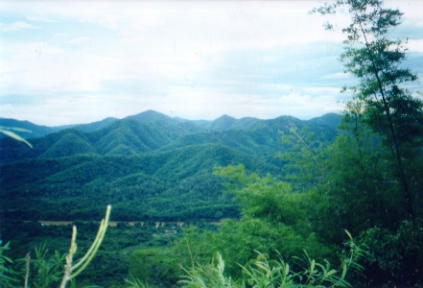
This is the village of Ah Mo, on the Tenasserim River. It was depopulated in
1997 and is now being reclaimed by the forest. At least six villages on the
Tenasserim were destroyed.

A house in Ah Mo, now overgrown.
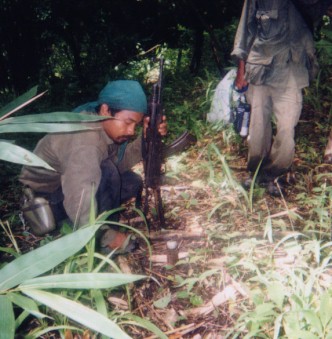
This photo is from October 2002, on one of the trails leading to Ah Mo. It shows
a Burmese MM1, or “Corncob,” anti-personnel landmine. The trail has
been mined by the SPDC to prevent the villagers from returning home. (Note:
we originally identified the mine as a Chinese-made PMOZ-2. The MM1 is a copy
of that mine. The Chinese set up a factory in Burma so the Burmese army could
manufacture their own landmines.)
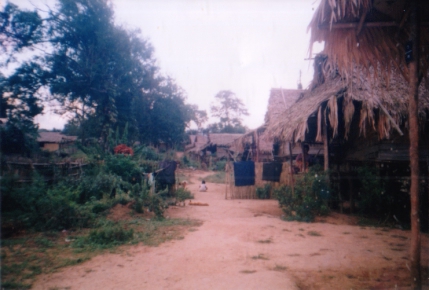
This is the relocation village of Mae Tah, which houses people formerly from
the villages of Sha Mu Taw, Sein Koo, and others.
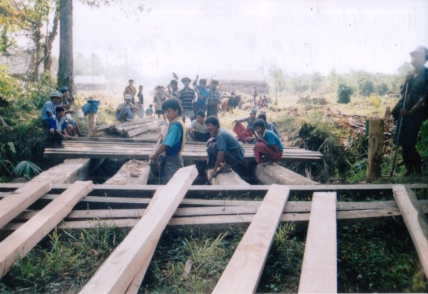
Villagers working on a forced labor project (at Kler Pu). Note that there are
no guards or chains. There is no need, since the villagers must do as they are
told, unless they are willing to flee and become IDPs.
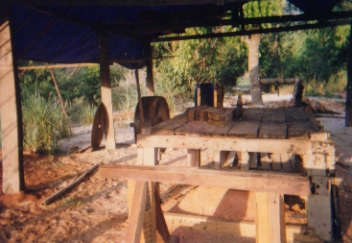
Since the ethnic cleansing, the SPDC has moved in to deforest the pristine natural
habitats left behind.
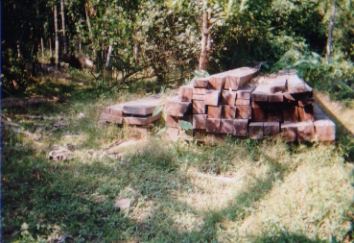
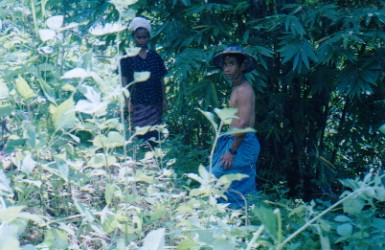
These are internally displaced persons. They are still living in the forest,
years after having lost their home. They are part of the larger group described
below. (This photo
is from October 2002.)
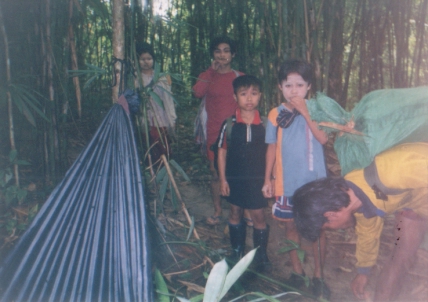
These individuals were part of a group of sixty-three people that were turned
back at the border in November 2001 by the Thais at Thong Pha Phum, close
to where the pipeline crosses. The group included members of fifteen families,
from a number of villages, and was comprised mainly of women and children.
The IDPs fled for five days from two columns of SPDC soldiers that were hunting
them (approxiamtely 300 soldiers). This was in the rainy season, one elderly
woman died along the way, and they arrived at the border covered in leeches.
The Thais have an agreement with the SPDC, that conflict and repression will
be kept away from the border. They also have a policy that new refugees will
not be admitted unless they are fleeing for their lives. Therefore, since
the Thai border guards cannot hear the sounds of battle and slaughter, the
refugees do not have to be let in.
In the Bangkok Post of 7 November 2001, a Thai general stated that
the IDPs were refused entry
because they were “illegal immigrants” attempting “to escape
poverty.” Further, he said that the IDPs were relocated to the village
of Htee Wah Doh, an established Karen village, which he reported was safe
and war-free.
This was not true.
The IDPs were told that they would be admitted to a refugee camp in Thailand.
Instead, they were put on trucks and transported to a Mon refugee camp in
Burma. The Mons were unhappy with this, fearing that the presence of the Karen
could lead to an SPDC attack. This is one consequence of the SPDC's policy
of divide and conquer. Groups which have lived peacefully as neighbors for
centuries are now afraid to help each other, fearing repercussions from the
Burmese Army.
The IDPs moved to Htee Wah Doh, but fearing attack fled to a nearby Mon village.
On 20 November 2001, the SPDC attacked Htee Wah Doh and burned it to the ground,
including churches and schools. At this time one villager was killed and an
IDP was shot and subsequently had to have a leg amputated. Some of the IDPs
were captured by the SPDC and were then used as porters. The remainder of
the group fled to the border again, this time at another crossing, but were
again refused entry. Since then they have continued to live in the forest.
Among the group were the family of the wounded farmer in our war
crimes photo series, who was admitted and is now in a refugee camp. This
is the situation - you need to be a battlefield casualty to be let into Thailand.
In addition, this forced separation compounds their suffering.

Did she live, or die?
Will the people responsible for this, including Unocal, TotalFinaElf, the
SPDC and the Thai government, ever be held accountable?









